Saturday the 22nd of April was Michi no Eki Aso’s annual Warabi (Wild Bracken) picking event.
Starting off the day at the magnificent Kokuzo Shrine, we were given a guided tour of the enchanting grounds, the famous Great Cedar of Teno and the Teno village area.
Kokuzo Shrine and Teno village are located north east of Michi No Eki Aso, about 15 minutes by car, at the foot of the Aso caldera’s outer rim.
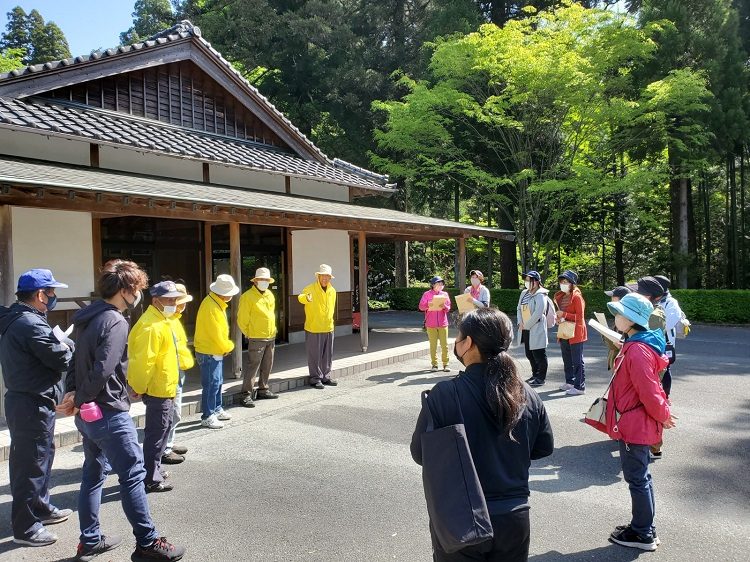
After an initial meeting at the parking area, we were taken on a walk around the grounds and then through a Torii gate up the wooded pathway to the main shrine.
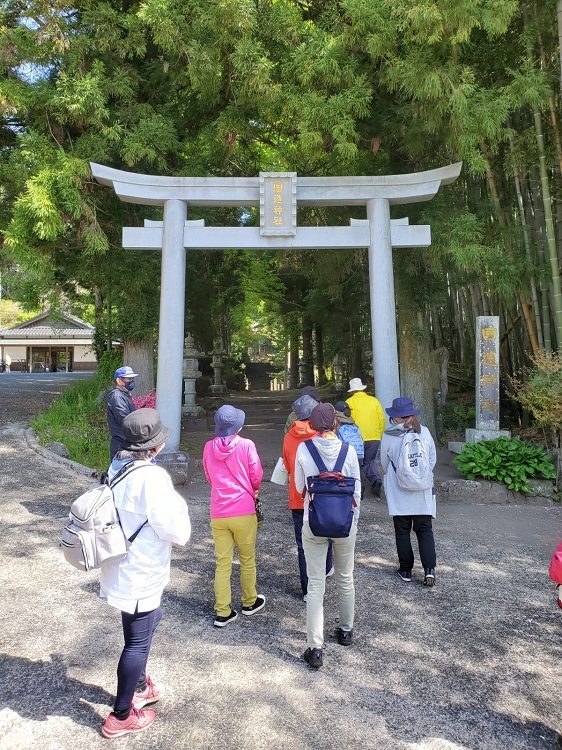
The guides explained the history of the shrine along with an introduction to the main agricultural ritual that takes place every year in July.
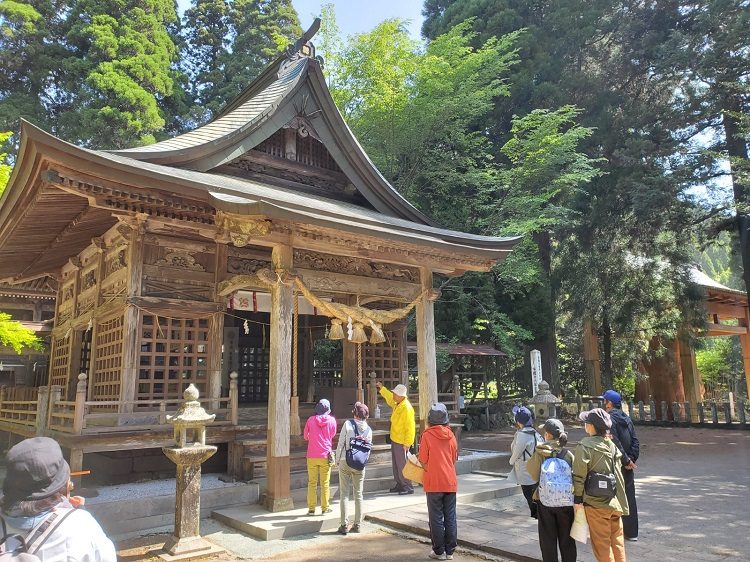
Being amongst the oldest shrines in Japan, it was founded around 2000 years ago and is dedicated to the four deities, Hayamikatama no Mikoto, Amamiya hime no Mikoto, Takahashi no Kami, and Hinomiya no Kami.
Annually a festival known as the Onda Matsuri (Rice Field Festival) takes place within the shrine’s surrounding areas.
Women dressed all in white (Unari) carry offerings for the gods above their heads. Rice seedlings are thrown at portable shrines and a rice planting ritual is held to promote a good yearly harvest.
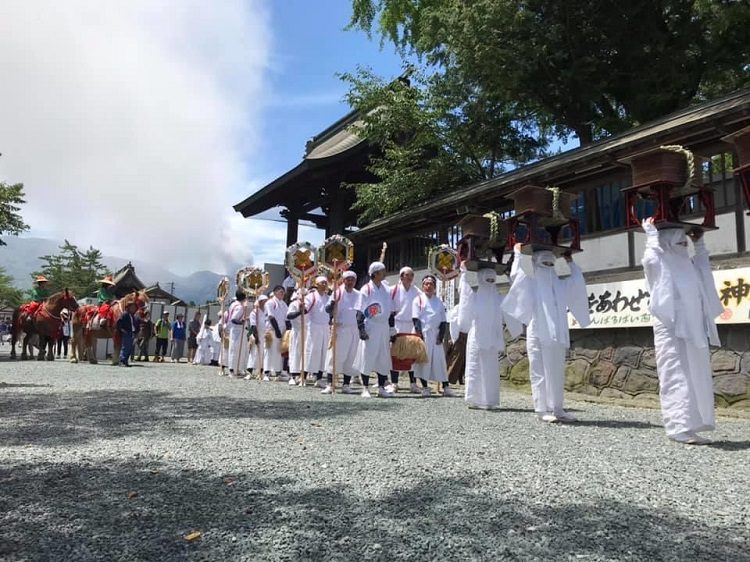
Approaching the shrine, we were offered to wash our hands using the pure natural spring water flowing from the shrine’s entrance.
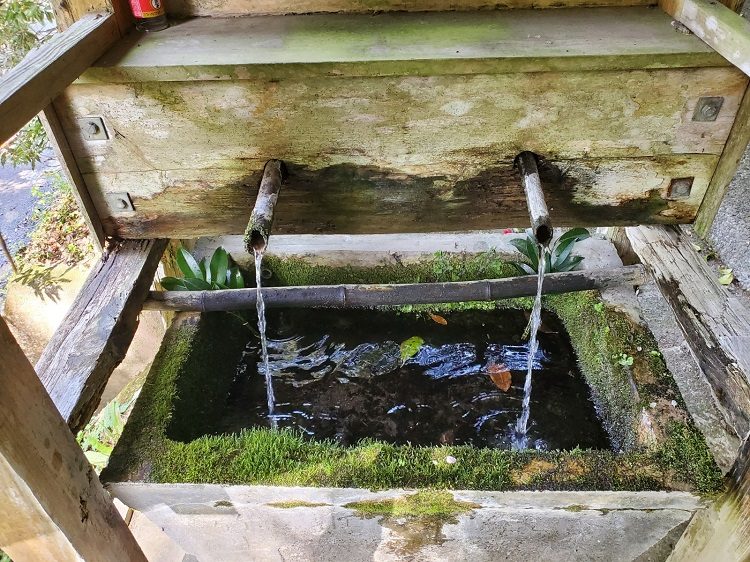
Located just right of the shrine, we were shown the great Sugi of Teno or the great cedar tree of Teno. Being also around 2000 years old, the cedar was unfortunately blown over during a typhoon in 1991.
Lovingly polished and preserved in lavender by the local people, the huge remains can still be admired by all who come to visit.
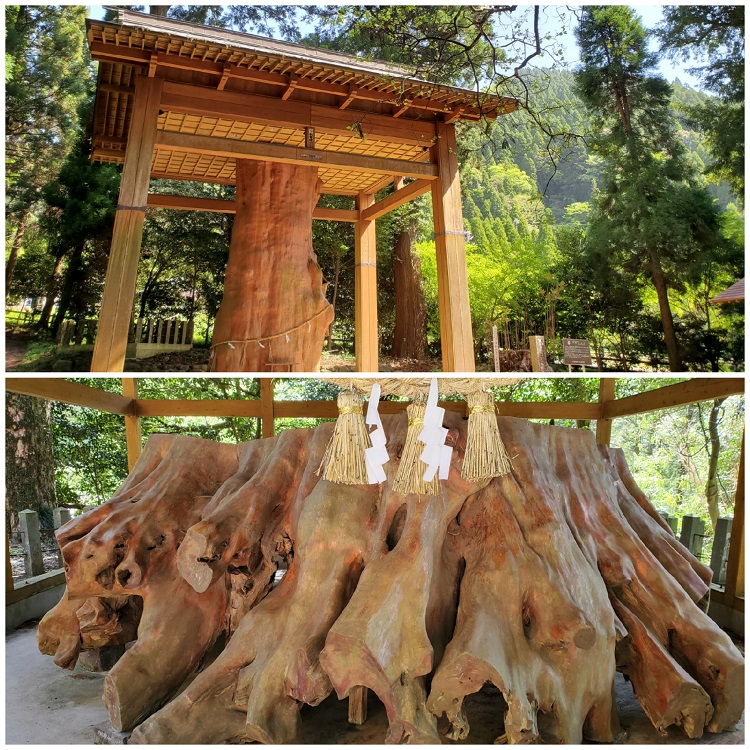
Our next stop on the tour took us to the Kami Ogura Tomb, a low narrow tomb built into the hillside. We were given the chance to enter the tomb and view inside which is a very rare option in Japan.
Struggling to initially get through the extremely low entrance, the tomb was incredibly peaceful albeit cramped and a little claustrophobic. You could really feel the ancient history of the place and the contrast in air to the outside was astonishing.
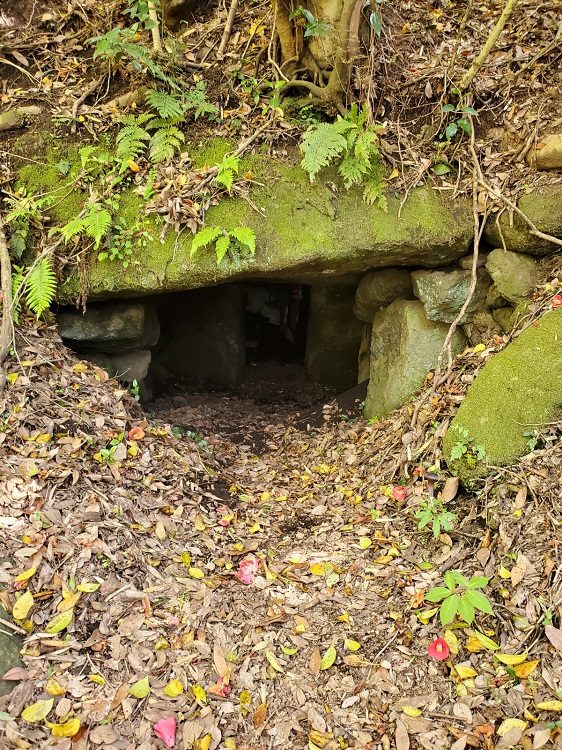
During the final leg of the tour we got to view both the famous water wheel and Kusa Domari tents that were used as temporary sleeping quarters in the past while local people took care of their livestock and gathered grass.
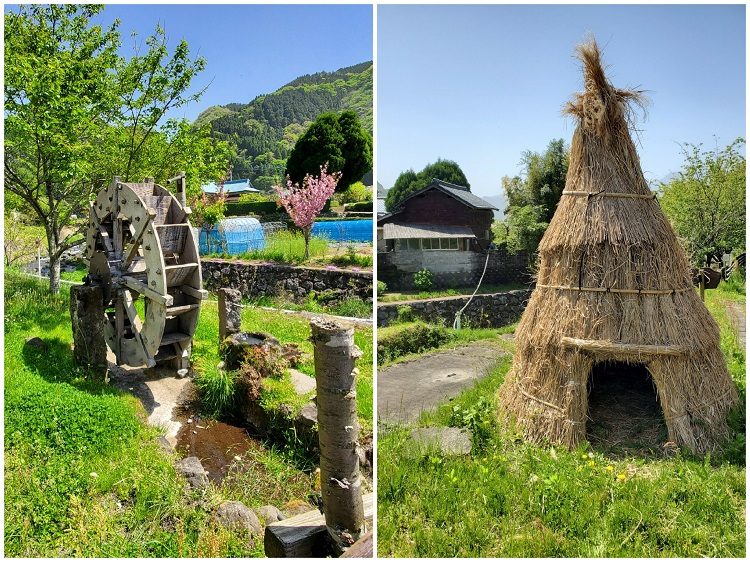
Once the tour came to an end, we were all transported on the back of trucks to the Bokuya grasslands to begin the Wild Bracken picking.
The Bokuya grasslands are usually inaccessible, so it was a great opportunity to be able to roam the gorgeous pastures freely.
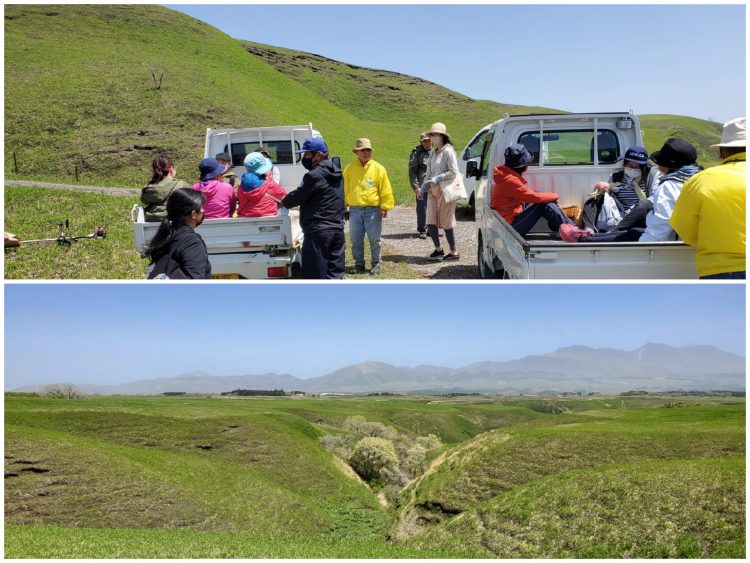
Firstly we were showing an example of what we should be on the look out for during our hunt for wild bracken.
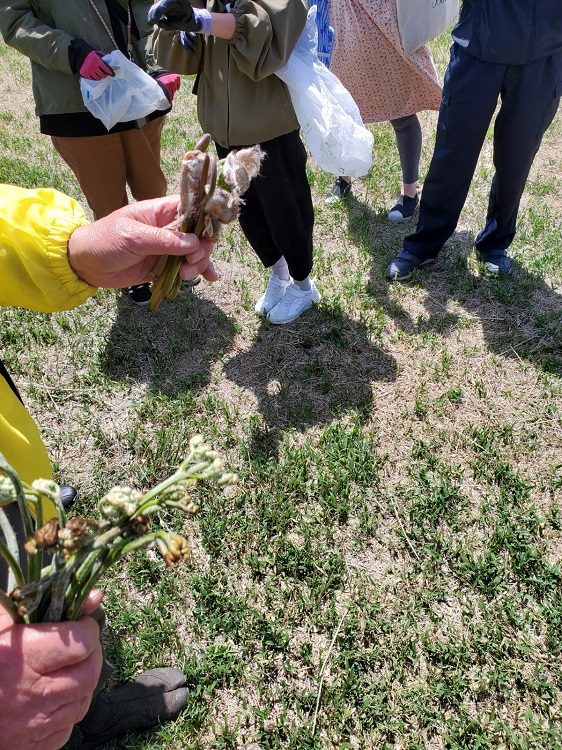
Even though it was explained clearly and shown to us, after 10 minutes of frantic picking and feeling proud of my half full bag, it was pointed out to me that I had picked completely the wrong plants and what I had was inedible.
With my pride now in tatters, the local guide took me to an abundant area and showed me exactly what I should be picking.
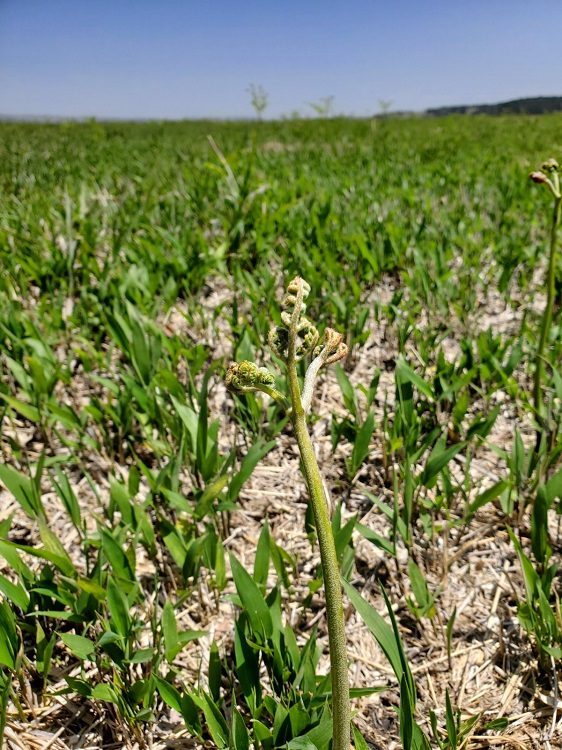
We continued for an hour, wandering the great hills of the grasslands filling our bags up with the fresh mountain vegetable and enjoying the warm sunshine. The views were stunning and the grasslands seem to go on forever in the distance.
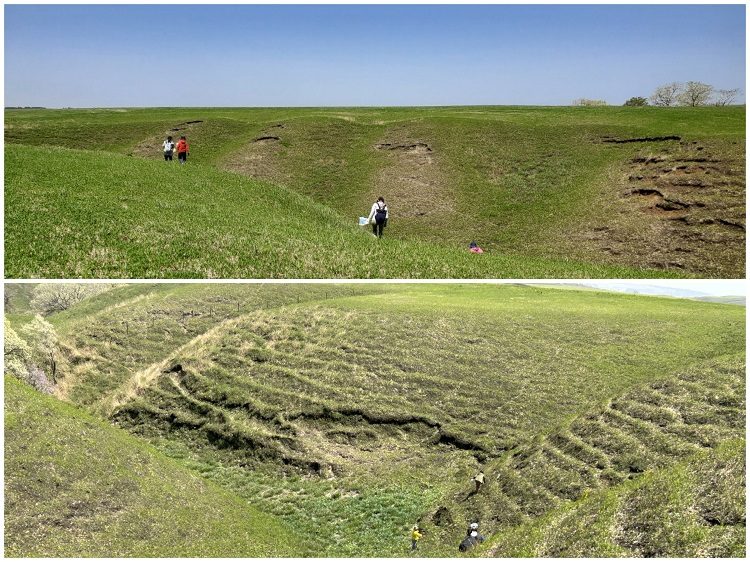
The hour seemed to fly past and due to my earlier mishap it was unsurprising that I had gathered the least amount of bracken out of the group by the time it came to lunch.
For lunch we were treated to a delicious local Japanese lunchbox (bento) containing Kumamoto’s famous Akaushi beef that we were able to enjoy sitting on the grasslands.
After taking one final group photo, it was time to take the truck ride back to the parking area and say our goodbyes.
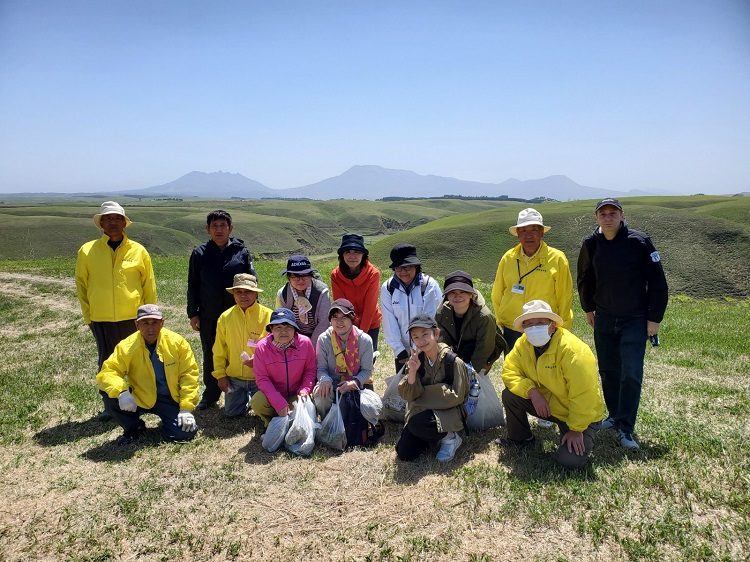
Tired but very appreciative of the opportunity it was time to head back to Michi No Eki Aso with great pictures and unique memories.
Thank you all for reading and following my experiences through my first month in Aso.
Oliver

